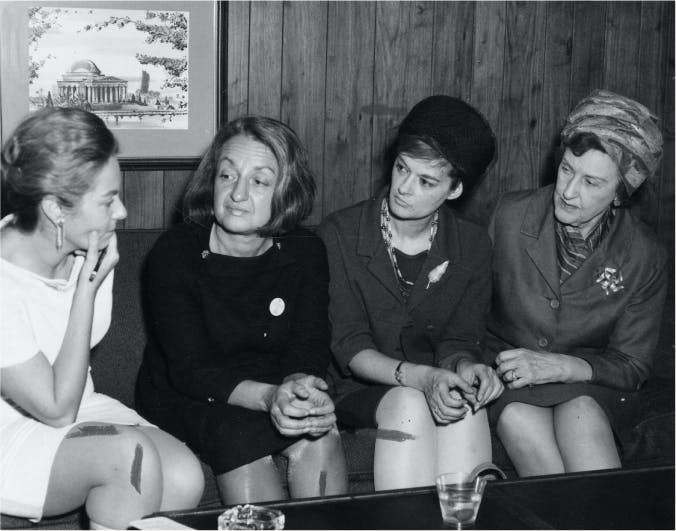National Organization for Women (NOW), Bill of Rights, 1968
Use this primary source text to explore key historical events.
Suggested Sequencing
- Use this Primary Source with the Phyllis Schlafly and the Debate over the Equal Rights Amendment Narrative and the The Birth Control Pill Narrative while discussing the various civil rights movements occurring during the 1970s to specifically target the issues of women at the time.
Introduction
The National Organization for Women (NOW) was formed in 1966. The group argued in its statement of purpose that “the time has come for a new movement toward true equality for all women in America, and toward a fully equal partnership of the sexes, as part of the worldwide revolution of human rights now taking place within and beyond our national borders.” The immediate cause for the creation of NOW was frustration over sex discrimination in the workplace. Such discrimination was banned by Title VII of the Civil Rights Act of 1964, but NOW’s founding members had grown angry over the lack of enforcement. In 1968, NOW issued the following “bill of rights,” which put forth its demands to ensure women were placed on an equal footing with men.
Sourcing Questions
- Who wrote this document and what was their purpose?
- Who was the likely audience for this source?
| Vocabulary | Text |
|---|---|
| We Demand: | |
| I. That the United States Congress immediately pass the Equal Rights Amendment to the Constitution to provide that “Equality of rights under the law shall not be denied or abridged by the United States or by any State on account of sex” and that such then be immediately ratified by the several States. | |
| Equal Employment Opportunity Commission: the federal agency that administers and enforces civil rights laws, formed by the Civil Rights Act of 1964, against workplace discrimination Title VII of the Civil Rights Act of 1964: federal law prohibiting employers from discriminating against employees on the basis of sex, race, color, national origin, and religion |
II. That equal employment opportunity be guaranteed to all women, as well as men by insisting that the Equal Employment Opportunity Commission enforce the prohibitions against sex discrimination in employment under Title VII of the Civil Rights Act of 1964 with the same vigor as it enforces the prohibitions against racial discrimination. |
| III. That women be protected by law to insure their rights to return to their jobs within a reasonable time after childbirth without loss of seniority or other accrued benefits and be paid maternity leave as a form of social security and/or employee benefit. | |
| IV. Immediate revision of tax laws to permit the deduction of home and child care expenses for working parents. | |
| V. That child care facilities be established by law on the same basis as parks, libraries and public schools adequate to the needs of children, from the pre-school years through adolescence, as a community resource to be used by all citizens from all income levels. | |
| VI. That the right of women to be educated to their full potential equally with men be secured by Federal and State legislation, eliminating all discrimination and segregation by sex, written and unwritten, at all levels of education including college, graduate and professional schools, loans and fellowships and Federal and State training programs, such as the job Corps. | |
| VII. The right of women in poverty to secure job training, housing and family allowances on equal terms with men, but without prejudice to a parent’s right to remain at home to care for his or her children; revision of welfare legislation and poverty programs which deny women dignity, privacy and self respect. | |
| VIII. The right of women to control their own reproductive lives by removing from penal codes the laws limiting access to contraceptive information and devices and laws governing abortion. |
Comprehension Questions
- According to articles I and II, what do women need to ensure an equal footing with men?
- How are articles III and V related?
- According to articles VI and VII, what do women need to ensure an equal footing with men?
Historical Reasoning Questions
- Compare this source with the 1923 Lucretia Mott Amendment (see the Chapter 11 Alice Paul and the Equal Rights Amendment (Lucretia Mott Amendment), 1923 Primary Source). What do these sources reveal about the continuities and changes in the women’s rights movement from the early to mid-twentieth century?
- To what extent do you think the demands of NOW are still relevant today? Explain.
National Organization for Women (NOW), Bill of Rights https://web.archive.org/web/20121114091603/http://coursesa.matrix.msu.edu/~hst306/documents/nowrights.html
